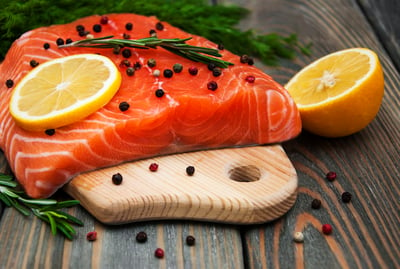Single Window Initiative (SWI) - Survival Guide for Fisheries and Oceans Canada (DFO-MPO) Trade Tracking Program
The new SWI landscape
The Single Window Initiative means several changes for importers:
- how you need to submit documentation is in flux;

- when that documentation is needed has changed; and
- which documentation is required is also shifting.
Our goal is to help you understand what is expected for the new “how, when, and what” of SWI requirements relating to the items you ship. These updates guide importers through specific commodities or categories of commodities, and the Participating Government Agencies (PGAs) that are affected.
How, when, and what
- Single Window Initiative requires all import documentation to be prepared and submitted before the shipment reaches customs.
- SWI is a new way of submitting documentation. All docs will be submitted using the Integrated Import Declaration (IID). Some of the requirements for how you submit are changing. For example: some documents that needed to be faxed now require an uploaded electronic image or just the document number.
- There may be changes to which documents are required under SWI.
- The launch date of SWI is still unknown, but it’s time to get proactive and adjust your workflow to ensure paperwork is ready before you ship.
Why importers need to know
Under the new SWI, it’s important that you understand which Participating Government Agencies (PGAs) are regulating your products. Some products are regulated by multiple PGAs, and the PGAs regulating your products may have changed under SWI. Additionally, each PGA and the CBSA can issue penalties for incorrect and missing documents. Understanding what information and documentation is needed for clearance will make the clearance process into Canada smoother and more efficient.
Fisheries and Oceans Canada (DFO-MPO) - Trade Tracking Program2020.png?width=400&name=SWI_Fisheries%20and%20Oceans%20Canada%20(DFO-MPO)2020.png)
When importing goods under Fisheries and Oceans Canada’s (DFO-MPO) Trade Tracking Program, some data elements are mandatory, other data elements may be asked for to allow a clearer identification of the product.
Documents are very important to the clearance process—importers must ensure the correct documents are provided so the import process goes smoothly.
Mandatory data elements
Common name: the common or non-scientific name by which the species is referred must be provided by the importer
Genus/species name: the Latin scientific name (genus and species) of the commodity being imported must be provided by the importer
Life stage: must be provided for each commodity
Name of commission: the appropriate commission for the commodity being imported must be provided by the importer
Commissions:
- ICCAT: International Commission for the Conservation of Atlantic Tunas
- IATTC: Inter-American Tropical Tuna Commission
- WCPFC: Western and Central Pacific Fisheries Commission
- CCAMLR: Commission for the conservation of Antarctic Marine Living Resources
Document type: document is required only for regulated items
Regulated fish:
- Atlantic Western Bluefin tuna
- Atlantic Eastern Bluefin tuna
- Pacific Bluefin tuna
- Pacific Bigeye tuna
- Atlantic Bigeye tuna
- Atlantic North Swordfish
- Atlantic South Swordfish
- Toothfish
Documents required: make sure you match your document and commission
- Atlantic Bluefin Tuna Catch Document (ICCAT)
- Atlantic Bluefin Tuna Re-Export Document (ICCAT)
- eBCD Bluefin Catch Document (ICCAT)
- eBCD Bluefin Re-Export Document(ICCAT)
- Bigeye Tuna Statistical Document (ICCAT)
- Bigeye Tuna Re-export Certificate (ICCAT)
- Patagonian Toothfish (Dissostichus) Catch Document (CCAMLR)
- Swordfish Statistical Document (ICCAT)
- Swordfish Re-export Certificate (ICCAT)
- Bigeye Tuna Statistical Document (IATTC)
- Pacific Bluefin Tuna Catch Document (WCPFC or IATTC)
- Pacific Bluefin Tuna Re-export document (WCPFC or IATTC)
LPCO (License, Permit, Certificate and Other Documentation) reference number: the associate reference number related to the document
Other data elements
Some or all of these data elements may be requested for a clearer identification of the product.
Sex: the sex of the commodity
Intended use:
- Food
- Aquaculture
- Research and development (e.g. animal model)
- Production of specialty chemical ( e.g. drug, vitamin)
- Environmental application (e.g. bioremediation, invasive species control)
- Ornamental (e.g. aquarium trade, zoo)
- Educational
- Other
Taxonomical Serial Number (TSN): allows for a clearer identification of the product
Country of source: the country in which the goods have been grown, harvested, manufactured, processed, produced or slaughtered
U.S. state of source: the U.S. state in which the goods have been grown, harvested, manufactured, processed, produced or slaughtered
Manufacturer: name and address details of the supplier of the finished goods or if the party was involved in the final productions
Harvesting party: name and address of the party that grew or harvested the commodity (if different than the manufacturer)
Processor: name and address of the party involved in the process (if different than the manufacturer)
For SWI, being proactive is your best strategy—gather all your information and documentation as far in advance as possible. Importers who know the requirements for the products they’re importing, and understand the new processes under SWI, will have a much smoother import experience.
As you adjust to the new requirements and workflow of the Single Window Initiative, we're here to help. Our customs team is ready to help you understand the SWI and its new requirements for your commodities—contact us today!
SWI. It's what we do.

Latest Articles
- Watch out for these extra charges on your freight bill
- Key differences between duty drawbacks and duty refunds for importers
- Mitigating container shortages and rising shipping prices for ocean imports
- How Canadian importers benefit from end use tariff codes and conditional relief
- The benefits of operating as a Non-Resident Importer in Canada
